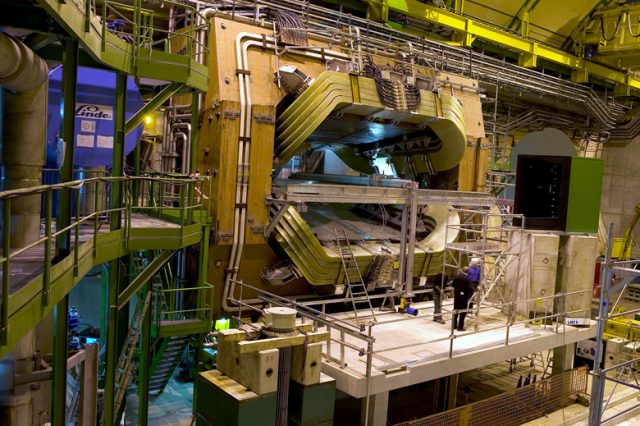Matter-antimatter asymmetry confirmed in baryons
Ars Technica » Scientific Method 2017-02-02

The LHCb detector. (credit: Fermilab)
Everyone, at some point in their lives, wonders why they are here. Existential questions don't stop at the personal level, though. Why is there a Universe, and why is it filled with matter? The last question is a puzzle that has gainfully occupied the minds of and employed physicists for many years. The time spent pondering such questions has not been wasted, as it turns out, as researchers from the LHCb detector report that one of the theoretical paths that allows matter to outnumber antimatter is open for business.
An overly simple reading of the Standard Model of physics predicts that matter will be produced at the same rate as antimatter. The antimatter and matter should, through simple statistics, collide and wipe each other out, leaving only energy. But that didn't happen. The substance we label matter was, somehow, produced in greater abundance than antimatter. In the beginnings of the Universe, antimatter was eliminated, leaving only matter.
A closer look at the Standard Model reveals that some imbalance is expected. But it also predicts a Universe with much less matter than we observe. And, experimentally, we've only observed the relevant matter/antimatter asymmetry for a particular class of particles, called mesons. That notably leaves out the particles that make up the Universe, called baryons. Luckily, baryon asymmetry is exactly what one of the LHC detectors, called LHCb, is designed to investigate.